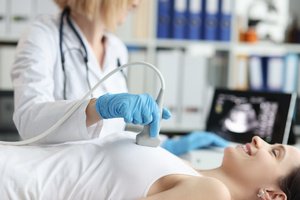For many women, the thought of getting a mammogram is very unsettling. The procedure itself is not very invasive, but the dread and anxiety that comes with awaiting results can be enough to make many women delay making an appointment. However, there are some very compelling reasons to schedule a mammogram, even if you don’t have a family history of breast cancer and do not feel anything suspicious in your breasts.
Early Detection Can Make All the Difference

Like many types of cancer, early detection can make all the difference when it comes to your chances of survival with breast cancer. Mammograms are recommended each year because it is the best way to make sure any tumors in your breasts are caught early enough to improve your prognosis. The American Cancer Society reports that when breast cancer is detected while it is still contained within the breast, the survival rate is 99 percent.
Doctors point out that when breast cancer is diagnosed early, it may be possible to undergo a small surgery known as a lumpectomy to remove the tumor and perhaps a small amount of radiation to keep it from returning. However, if it is not detected until it has grown bigger, it may be necessary to undergo chemotherapy or even have a mastectomy, which is an operation that removes the full breast.
Breast Cancer Is Not Solely a Family Illness
Although it is true that having a family history of breast cancer makes it more likely that you will develop it, those without a family history are still vulnerable. Breast cancer genes like the BRCA gene have made headlines in recent years and can certainly indicate that someone has a high risk, but the truth is that only around 5 to 10 percent of breast cancers stem from abnormal genes that are passed to a woman by a parent.
As you get older, your risk of developing breast cancer increases. This is why it is necessary to continue to get mammograms yearly or at the interval recommended by your doctor. In addition to advancing age, alcohol use and obesity can increase your risk of developing breast cancer.
One Out of Every Eight American Women, on Average, Will Develop Breast Cancer

Breast cancer is the most common type of cancer to be diagnosed among US women after skin cancer. Unfortunately, it is also the second leading cause of cancer-related deaths. The Centers for Disease Control and Prevention reports that roughly 245,000 new breast cancer cases are diagnosed in women every year. This means that regardless of a woman’s risk, it is important to continue undergoing routine mammograms each year.
Mammograms Can Save Lives
Studies have shown that starting annual mammograms at age 40 can reduce a woman’s chances of dying of breast cancer by nearly 40 percent. However, it is important to keep in mind that women who have a family history of breast cancer need to begin regular screenings earlier.
While some women request breast ultrasounds in place of mammograms, it is important to note that a mammogram is the only type of imaging that has been proven to save lives when it comes to breast cancer. Although ultrasounds are useful in some cases alongside a mammogram, an ultrasound alone can sometimes miss a cancer diagnosis.
These days, a new advance in mammogram technology, known as a 3D mammogram, provides an even more effective form of detection than the 2D mammograms that have been in favor for many years. A 3D mammogram is now the preferred imaging method thanks to its ability to detect more cancers and decrease the risk of unnecessary reimaging because of false positives. The process feels the same to the woman undergoing it as its predecessor and the dose of radiation is similar, but it can provide much more information about what is occurring in a woman’s breasts.
Abnormalities Linked to Cancer Cannot Always be Felt

You may already carry out monthly breast self-exams, and your doctor likely conducts a breast exam at your yearly gynecological checkup. However, a mammogram can find breast cancer well before you or your doctor would be able to feel a lump in your breast. In fact, many women will not feel changes in their breasts until a significant lump has formed, at which point the cancer could already be growing and spreading and will be significantly more challenging to treat. Mammograms are able to detect changes in breast tissue that are small as a grain of sand, making it the most effective tool for detecting cancer early.
Contact Raleigh Gynecology & Wellness to Learn More About Breast Care
Mammograms are a valuable tool for the early detection of breast cancer. To learn more about mammograms and breast exams or to schedule a checkup, contact the women’s health-care professionals at Raleigh Gynecology & Wellness.
